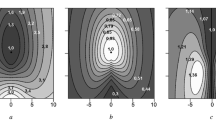Abstract
The temporal widths of a light pulse as measured in different inertial frames are shown to have a relation more complicated than that of a simple time dilatation. The result is compared with the dilatation in the twin paradoxGedanken experiment. The light pulse measurement requires two observers in two different frames. The measurements of the observers are compared. For the twin experiment a comparison is made between two clocks which have undergone different histories between the two points at which their world lines intersect.
Similar content being viewed by others
References
J. Terrell,Phys. Rev. 116, 1041 (1959).
V. F. Weisskopf,Physics Today 13, 24 (1960).
O. R. Frisch,Contemporary Phys. 3, 16 (1961–2).
O. R. Frisch,Contemporary Phys. 3, 194 (1961–2).
H. J. Hay, J. P. Schiffer, T. E. Cranshaw, and P. A. Egelstaff,Phys. Rev. Letters 4, 165 (1960).
B. Rossi and D. B. Hall,Phys. Rev. 59, 223 (1941).
R. G. Newburgh and T. E. Phipps, Jr.,Nuovo Cimento 67B, 84 (1970).
Author information
Authors and Affiliations
Rights and permissions
About this article
Cite this article
Newburgh, R.G. Pulse widths and time dilatation. Found Phys 5, 399–405 (1975). https://doi.org/10.1007/BF00708886
Received:
Issue Date:
DOI: https://doi.org/10.1007/BF00708886




